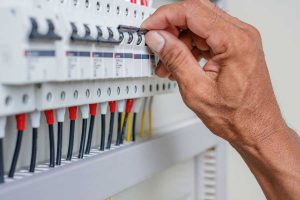Vending machines have evolved significantly over the years, incorporating advanced electronics, cashless payment systems, energy-efficient components, and improved safety features. Whether you own a vending business or are an electrical engineer looking to upgrade an outdated system, understanding how to safely enhance the electrical components of a vending machine is essential.
Upgrading a vending machine’s electrical system can lead to increased efficiency, reduced energy consumption, better security, and seamless integration with modern technologies. However, handling electrical components requires careful planning, safety precautions, and knowledge of electrical principles.
In this article, we will walk through step-by-step instructions on upgrading the electrical system in your vending machine safely. Topics will include identifying outdated components, upgrading power supplies, integrating smart payment systems, replacing relays with an electric contactor, ensuring electrical safety, and performing system testing.
1. Why Upgrade the Electrical System in a Vending Machine?
Upgrading the electrical system in a vending machine is necessary for several reasons:
1.1 Increased Efficiency
Older vending machines use inefficient power supplies and motors that consume more energy. Upgrading to modern energy-efficient components can lower power consumption and reduce operational costs.
1.2 Enhanced Safety
Old vending machines may have frayed wires, outdated fuses, or worn-out components that pose fire or electrical hazards. An upgrade ensures compliance with modern safety standards.
1.3 Smart Payment Integration
With the rise of cashless payments, mobile wallets, and contactless transactions, upgrading the vending machine’s electrical system allows seamless integration with smart payment terminals.
1.4 Improved Reliability
Older electrical components are more prone to failures. Upgrading to modern switches, relays, and electric contactors increases the vending machine’s lifespan and reliability.
1.5 Compliance with Electrical Standards
Regulations governing vending machines may require periodic upgrades to comply with updated safety and energy efficiency standards.
2. Understanding the Electrical Components of a Vending Machine
Before making any upgrades, it’s crucial to understand the key electrical components of a vending machine:
Power Supply Unit (PSU) – Converts AC power into low-voltage DC power required by the vending machine’s electronic systems.
Electric Contactor – Controls power distribution to high-voltage components like compressors and motors.
Relays and Switches – Used to control vending operations and dispense items.
Coin and Bill Validators – Accepts and processes cash payments.
Card Reader or Mobile Payment Module – Enables contactless and digital transactions.
Cooling System – Includes compressors and fans that require stable electrical connections.
Lighting System – Uses LED or fluorescent lights for product visibility.
Microcontroller or CPU Board – The vending machine’s “brain” that controls all operations.
3. Safety Precautions Before Upgrading the Electrical System
Since you will be working with live electrical circuits, safety must be the top priority. Follow these precautions before beginning the upgrade:
3.1 Power Down the Machine
Unplug the vending machine from the power source.
If hardwired, switch off the circuit breaker that supplies power to the machine.
3.2 Use Proper Safety Gear
Wear insulated gloves and safety goggles.
Use an anti-static wrist strap when handling sensitive electronics.
3.3 Identify Voltage Ratings
Read the voltage and amperage specifications of your vending machine to ensure compatibility with new components.
3.4 Check for Wiring Damage
Inspect all wiring, connectors, and terminals for frayed insulation, corrosion, or loose connections.
3.5 Avoid Water and Moisture
Ensure the vending machine is in a dry area before starting the upgrade.
4. Step-by-Step Guide to Upgrading the Electrical System
Step 1: Upgrading the Power Supply Unit (PSU)
The power supply unit (PSU) is responsible for converting AC mains power to lower DC voltages for vending machine operations.
How to Upgrade the PSU:
Identify the PSU’s output voltage (e.g., 12V, 24V DC).
Choose a high-efficiency PSU (e.g., a switching power supply instead of an old transformer-based PSU).
Disconnect the old PSU and safely dispose of it.
Wire the new PSU following the wiring diagram to avoid polarity errors.
Secure all connections and test for proper voltage output before proceeding.
Step 2: Replacing Mechanical Relays with an Electric Contactor
Older vending machines often use electromechanical relays to control high-voltage components. Replacing them with an electric contactor improves reliability and efficiency.
Why Use an Electric Contactor?
Handles higher electrical loads more efficiently.
Reduces wear and tear compared to traditional relays.
Enhances safety by preventing electrical arcing.
How to Replace a Relay with an Electric Contactor:
Turn off the power to avoid electrical shock.
Identify the relay controlling motors or compressors.
Choose an electric contactor with a matching voltage and amperage rating.
Disconnect the relay’s control wires and remove it from the circuit.
Wire the new electric contactor’s coil to the vending machine’s control circuit.
Connect the power contacts to the load (compressor, motor, or heater).
Test the vending machine to confirm proper operation.
Step 3: Upgrading Payment Systems
To support modern payment options, integrate cashless payment terminals that accept credit cards, NFC (Near Field Communication), and mobile wallets.
How to Install a Cashless Payment System:
Choose a compatible payment terminal (e.g., Nayax, PayRange, or Square).
Connect the terminal to the power supply.
Wire the communication interface (e.g., MDB or DEX protocol).
Test the transaction process before deploying the machine.
Step 4: Enhancing the Cooling System
Vending machines with refrigeration units require efficient cooling systems to keep perishable items fresh.
Upgrade Options:
Replace old compressors with energy-efficient models.
Upgrade cooling fans for better air circulation.
Ensure the cooling system has proper thermal protection circuits.
Step 5: Installing LED Lighting for Energy Efficiency
Replacing fluorescent bulbs with LED lighting reduces power consumption and increases durability.
How to Install LED Lighting:
Remove the existing fluorescent ballasts and tubes.
Install low-voltage LED strips or LED panel lights.
Connect LEDs to a regulated DC power source.
Secure the lights and test illumination levels.
Step 6: Conducting Final Safety Checks
After completing the upgrades, conduct a final safety and functionality check:
Check for loose wiring and secure connections.
Use a multimeter to verify voltage outputs.
Inspect circuit breakers and fuses for proper operation.
Test vending operations to confirm smooth functionality.
5. Troubleshooting Common Issues After an Electrical Upgrade
Issue 1: Machine Doesn’t Power On
Check the main power switch and circuit breaker.
Verify power supply unit connections.
Issue 2: Cooling System Not Working
Ensure the compressor contactor is functioning properly.
Check for faulty temperature sensors.
Issue 3: Payment Terminal Not Recognizing Transactions
Verify power connections to the payment module.
Check communication protocol settings.
Issue 4: LED Lights Flickering
Ensure the power supply matches LED voltage requirements.
Check for loose wiring.
Conclusion
Upgrading the electrical system in a vending machine enhances efficiency, safety, and profitability. By replacing outdated components, such as power supplies, relays, and switches with an electric contactor, integrating cashless payment options, and improving cooling and lighting systems, vending machine owners can future-proof their investment.
Electrical upgrades require careful planning, adherence to safety standards, and the use of high-quality components. Whether you are an experienced technician or undergoing an electrical engineer internship, understanding the principles of vending machine electrical systems will ensure a smooth and safe upgrade process.
By following this guide, you can confidently modernize your vending machine and keep up with the ever-evolving technology trends in the industry.






